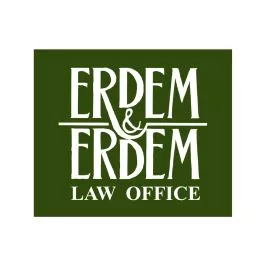Introduction
Witness conferencing is a means of taking evidence that is widely used in international arbitration practise. It is also applicable in court litigation in some jurisdictions1. Witness conferencing may be described as an evidence-taking process in which two or more witnesses give evidence concurrently before a tribunal2. Also called as witness confrontation, witness conferencing offers a wide range of forms and methods3.
Pros and Cons of Witness Conferencing
Witness conferencing has become a popular procedure due to the notable advantages it brings4. In comparison to consecutive examination of witnesses, witness conferencing may be considered more effective for taking evidence as it eases the tribunal's work of comparing the diverging claims of the witnesses. It also offers the opportunity to instantly challenge the witnesses on each other's testimonies, and in real time, before the tribunal5. Moreover, it serves as a time and cost-effective measure since the duration of the hearings is reduced by examination of several witnesses at once6.
However, one should bear in mind that witness conferencing is not suitable for every sort of dispute, since it may adversely affect the proceedings due to the tense nature of confrontation7. In such a case, the quality of evidence may be severely harmed due to personal, professional or cultural obstacles that witnesses face when they give oral evidence8. Accordingly, the circumstances of each case shall be individually reviewed to conclude on the appropriateness of witness conferencing.
The CIArb Guidelines
The Chartered Institute of Arbitrators has recently published Guidelines for Witness Conferencing in International Arbitrations (the "CIArb Guidelines") with the aim to provide a procedural framework for practitioners of this widely used method. The CIArb Guidelines contains three main parts, those being (i) the Checklist, (ii) the Standard Directions, and (iii) the Specific Directions, in addition to explanatory notes for each part.
The Checklist
The Checklist offers a non-exhaustive list to assist the tribunal and the parties while they assess whether witness conferencing is suitable for the particular dispute at hand. It also provides diverging forms of conferencing9.
As per the Checklist, witness conferencing is efficient if there is conflicting opinion evidence on a topic requiring testing. If the tribunal has experience or expertise on the issue covered by the witnesses, the CIArb Guidelines suggests tribunal-led conferencing10.
Although fact witnesses may also be subject to witness conferencing, it is less common to examine them via conferencing in comparison to expert witnesses, since experts may ground their diverging approaches on the issue at hand to professional reasoning, whereas fact-based witnesses often struggle to do so with the facts11. Hence, the CIArb Guidelines underline possible drawbacks of using witness conferencing for fact-based witnesses12.
The Checklist provides a noteworthy assessment on the relationship between the witnesses13. Accordingly, the CIArb Guidelines invite the practitioners to consider pre-existing relationships and cultural backgrounds of the witnesses. Most notably, it is illustrated that in some cultures, seniority (of age and/or profession) affects interaction amongst witnesses. Accordingly, while junior witnesses face cultural difficulties in rebutting the seniors, the seniors may not even deem it necessary to justify his/her views due to seniority which, in the end, reduces the quality of evidence. In addition, the Checklist provides an illustrative joint report format showing issues agreed and disagreed upon.
The Standard and Specific Directions
The Standard Directions of the CIArb Guidelines offer a procedural framework focusing on the tribunal's initial, or an early procedural order, on the conduct of the arbitration14. Accordingly, it suggests requesting a schedule covering areas agreed or disagreed upon by the witnesses, and a chronology of agreed-upon facts on the evidence given, concurrently, to ease the tribunal's workload throughout the proceedings.
Whereas, the Specific Directions focus on procedural framework, depending upon by whom the conferences are to be led; (i) the tribunal, (ii) the witnesses, and (iii) the counsel15. Since each option offers a higher degree of control to the leader of the conference over the evidence, the CIArb Guidelines provides valuable directions to take into consideration prior to deciding on the method to be chosen.
Conclusion
By going beyond traditional cross-examination, witness conferencing often provides more effective and efficient means through which to provide evidence to the tribunals. The CIArb Guidelines answers the need of practitioners in international arbitration, through the non-exhaustive guidelines, procedural frameworks, and directions it provides in this commonly used mean of taking evidence.
Footnotes
[1] The courts of Australia, Singapore, England and Wales may be regarded as jurisdictions with witness conferencing methods that are used in court litigation: "Guidelines for Witness Conferencing in International Arbitration" ("the CIArb Guidelines"), The Chartered Institute of Arbitrators, April 2019, p. 13.
[2] Ballantyne, Jack; "CIArb Releases Witness Conferencing Guidelines", Global Arbitration Review, 30 April 2019; The CIArb Guidelines, p. 13.
[3] For instance, witness conferencing may be led by the tribunal, the witnesses, themselves, and/or by counsel.
[4] Yuen, Peter/ Townsend, Matthew; "New CIArb Guidelines on Witness Conferencing," Kluwer Arbitration Blog, 25 April 2019.
[5] CMS Law Singapore, "CIArb Launches Guidelines for Witness Conferencing in International Arbitration," 6 May 2019.
[6] The CIArb Guidelines, p. 13-14.
[7] Robertson, David / Knight, Emma / Akiki Frederic; "Witness Conferencing: New CIArb Guidelines," Lexology, 8 May 2019.
[8] The CIArb Guidelines, p. 14.
[9] The CIArb Guidelines, p. 26.
[10] The CIArb Guidelines, p. 26.
[11] For further information on witness conferencing of fact-based witnesses, please see: Hendel, Clifford J.; "Witness Conferencing Involving Witnesses of Fact: A Good Idea Whose Time Has Not Yet Come?" International Bar Association Arbitration News, Vol. 16, No.1, March 2011.
[12] The CIArb Guidelines, p. 28.
[13] The CIArb Guidelines, p.16 and 30-33.
[14] The CIArb Guidelines, p.18-19 and 45-51.
[15] The CIArb Guidelines, p. 20-24 and 52-65.
The content of this article is intended to provide a general guide to the subject matter. Specialist advice should be sought about your specific circumstances.

